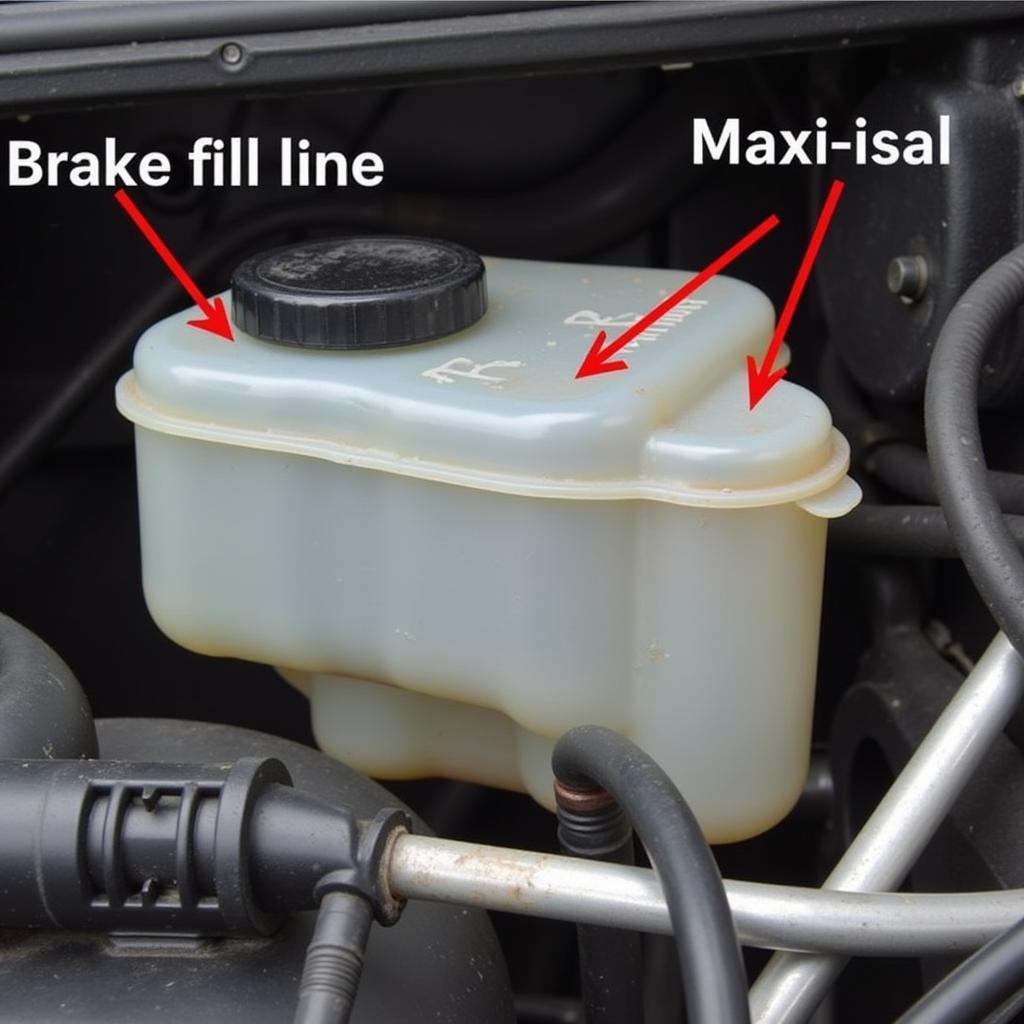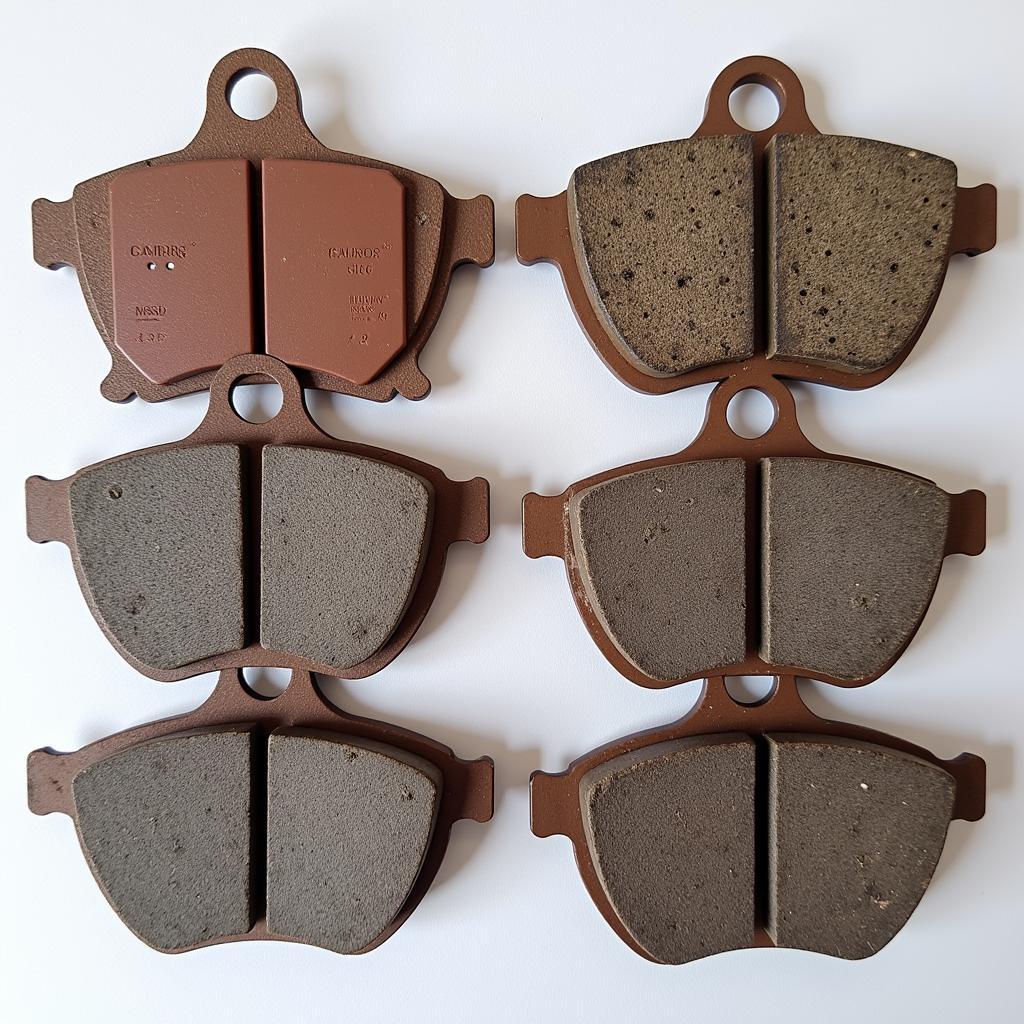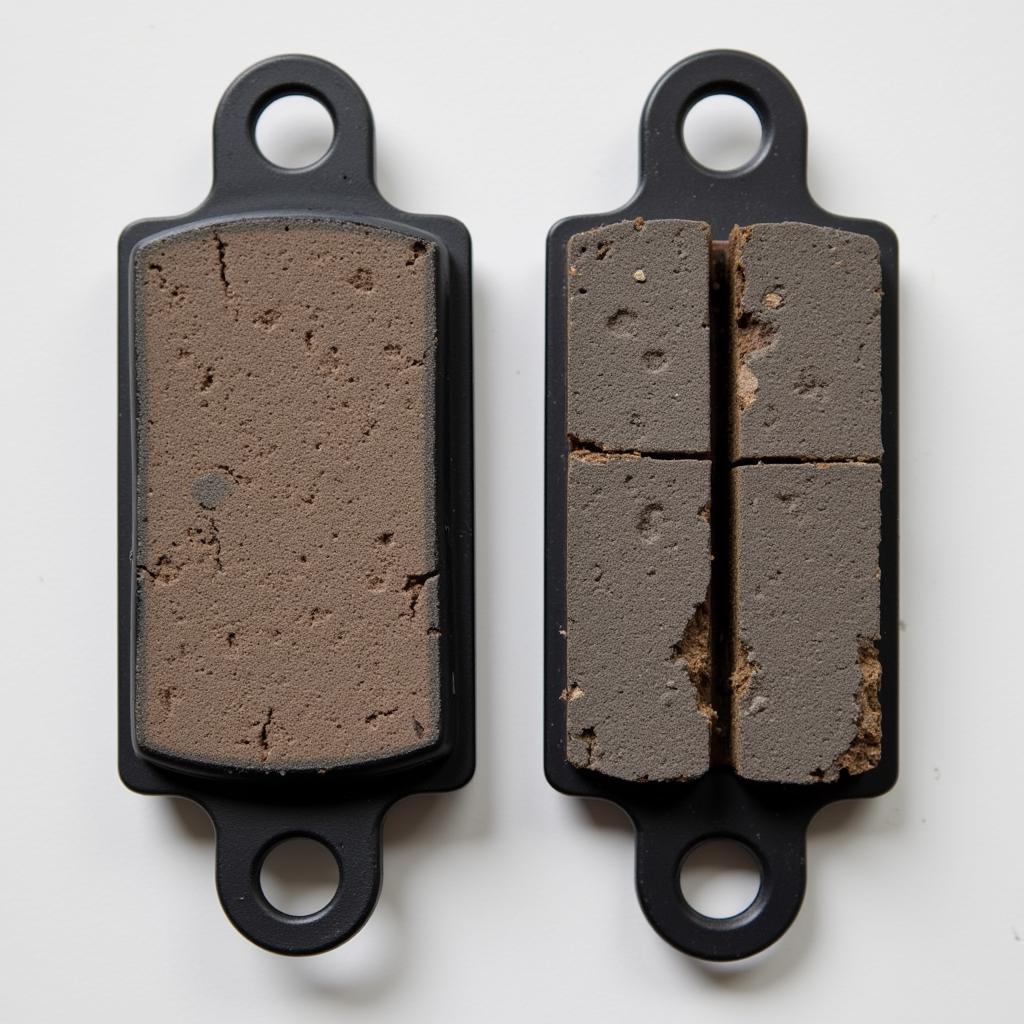The brake warning light on your 2000 BMW 528i is a crucial safety feature designed to alert you of potential issues within your braking system. Ignoring this warning light can lead to dangerous driving conditions and costly repairs. This article will guide you through the common causes of a brake warning light illumination in a 2000 BMW 528i and provide troubleshooting tips to help you address the issue.
Understanding Your BMW’s Brake System
Before we delve into the specifics of the warning light, it’s helpful to understand the basics of your BMW’s braking system. It’s comprised of several key components:
- Hydraulic System: This system uses brake fluid to transmit force from the brake pedal to the brakes at each wheel.
- Brake Master Cylinder: This cylinder is responsible for pressurizing the brake fluid when you press the brake pedal.
- Brake Calipers and Pads: The calipers house the brake pads, which clamp down on the brake rotors to slow or stop the vehicle.
- Brake Rotors: These metal discs are attached to the wheels and provide a surface for the brake pads to grip.
- Anti-lock Braking System (ABS): The ABS prevents the wheels from locking up during hard braking, helping you maintain steering control.
Common Causes of a Brake Warning Light
Here are some of the most common reasons your 2000 BMW 528i’s brake warning light might illuminate:
1. Low Brake Fluid Level
This is one of the most common and easiest-to-fix issues. Low brake fluid level usually indicates a leak in the hydraulic system, which needs to be addressed immediately.
Troubleshooting:
- Check the brake fluid level. The reservoir is typically located near the firewall on the driver’s side.
- Add brake fluid if needed. Be sure to use the correct type of brake fluid specified in your owner’s manual.
- Inspect for leaks. Carefully examine the brake lines, hoses, and connections around each wheel for any signs of fluid leakage.
 BMW Brake Fluid Reservoir
BMW Brake Fluid Reservoir
2. Worn Brake Pads
Brake pads have wear indicators that create a squealing sound when they become too thin. If you ignore this sound and continue driving, the brake warning light may illuminate.
Troubleshooting:
- Listen for squealing or grinding noises when applying the brakes.
- Inspect the brake pad thickness. You might be able to visually inspect the pads through the spaces between the wheel spokes.
- Replace worn brake pads. It’s recommended to have a professional mechanic check and replace brake pads.
 Worn Brake Pads on a BMW
Worn Brake Pads on a BMW
3. Faulty Brake Pad Sensor
Your BMW has sensors that monitor brake pad wear. If a sensor malfunctions or becomes damaged, it can trigger the brake warning light even if the pads are fine.
Troubleshooting:
- Inspect the brake pad sensor wires. Check for any damage or disconnections.
- Test the brake pad sensor. A multimeter can be used to test the sensor’s resistance.
- Replace a faulty sensor.
4. ABS Issues
Problems within the Anti-lock Braking System (ABS), such as a faulty wheel speed sensor or a malfunctioning ABS module, can also trigger the brake warning light.
Troubleshooting:
- Check for stored trouble codes. A diagnostic scanner can be used to read ABS-related codes.
- Inspect wheel speed sensors. Check for damage or debris near the sensors.
- Seek professional diagnosis. Diagnosing and repairing ABS issues often require specialized tools and expertise.
What to Do When the Brake Warning Light Comes On
If your brake warning light comes on, it’s crucial to:
- Pull over safely. Find a safe location to stop as soon as possible.
- Check your brake fluid level. If it’s low, add fluid but proceed with extreme caution.
- Avoid driving further if possible. Continuing to drive with a potential brake system issue can be dangerous.
- Have your vehicle towed to a qualified mechanic. They can properly diagnose the issue and perform the necessary repairs.
Conclusion
Addressing a brake warning light promptly is essential for your safety and the longevity of your 2000 BMW 528i. By understanding the common causes and following the troubleshooting tips outlined in this article, you can take the right steps to ensure your braking system is in optimal condition. However, it’s important to remember that working on brakes requires mechanical expertise. If you’re unsure about any aspect of brake repair, it’s always best to consult with a qualified mechanic.

